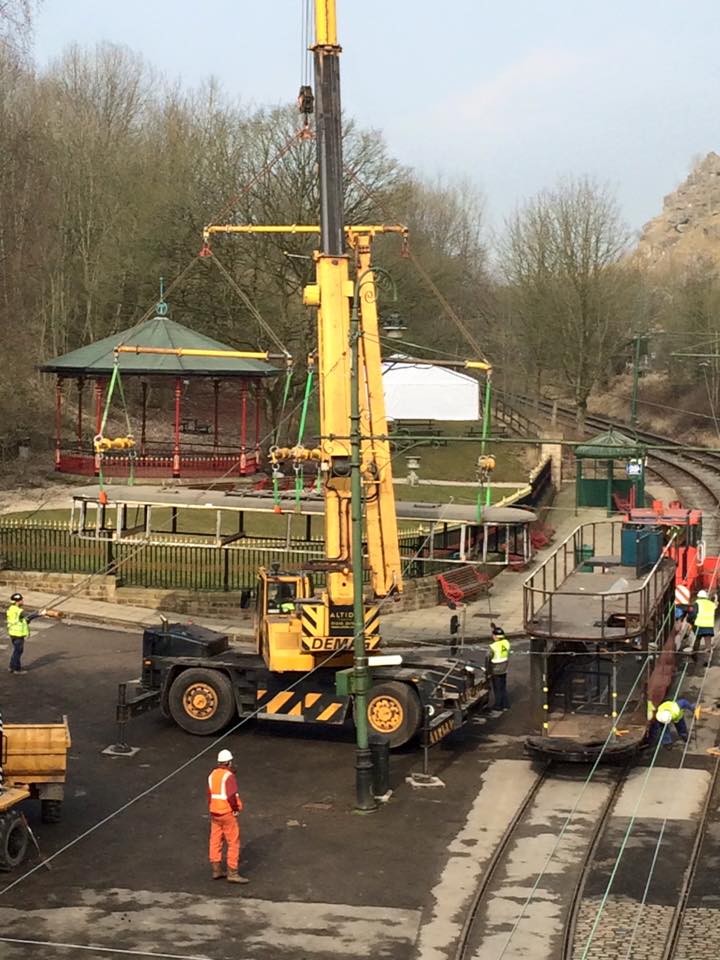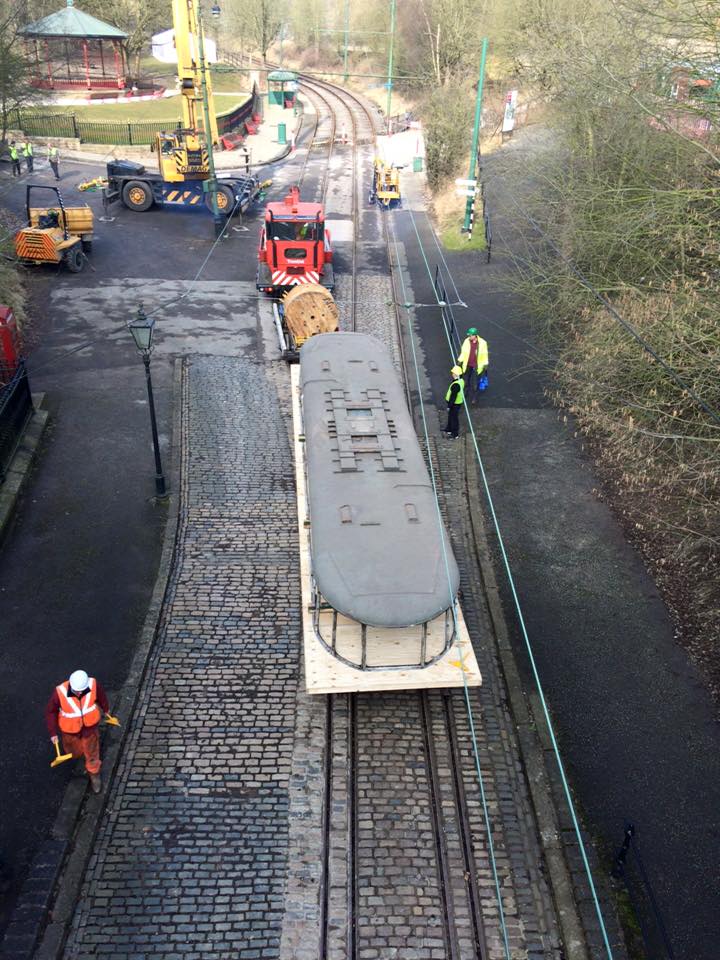On Friday 11th March, a notable and unusual activity took place at Crich Tramway Village involving the ongoing process of stripping London County Council 1. Having spent the past eighteen months in the museum’s workshop, the tram has been reduced to a mere shell – but on this day its appearance was changed even more drastically, with the removal of its roof!
As the museum have been keen to retain as much original material as possible from LCC 1 due to its unique place in British transport history as a prototype vehicle which helped to inspire many other tramcar designs, the task of dismantling it has been a rather long-winded one. Many valuable items have been removed from the tram and placed in storage containers, leaving the interior devoid of anything at all and most exterior panelling now also removed, revealing the basic framework beneath. It was decided to remove the car’s roof and upper deck window surround framing which is expected to receive specialist repair, and a crane was hired in specially to undertake this procedure.
After careful consideration about how to best go about removing the roof of the tram, it was decided to carry out the task on the main line near the museum entrance, mainly due to the amount of solid ground in the vicinity that the crane could stand on. This required a considerable amount of planning, not least due to the need for some of the overhead wires to be moved slightly so as not to be in the way of the crane during the lifting process. Therefore on 11th March, what little remains of LCC 1 was dragged out of the workshop into the winter sun for the first time in many months. It was then coupled up to the Croydon Tramlink KLV and towed the short distance to the entrance tram stop, where the crane was waiting to undertake the delicate process of removing the upper part of the car’s body frame. A flat bed mounted on a spare truck was also present, with the roof structure then being placed upon it and then both this and the rest of the tram were returned to the workshop for the lengthy project to continue. This is expected to be the last major stage in the deconstruction process; hopefully work to restore the tram to its former glory can now gather pace. In the meantime, various bits of the London car are filling up the workshop, to the extent that one of its bogies was recently moved to the Exhibition Hall for temporary storage. Once again, this highlights the chronic shortage of space in the depots although the museum is of course very fortunate in having its wonderful collection of trams all housed undercover!

An unusual view from the Bowes Lyon Bridge at Crich showing a familar scene, dominated by a large crane and the shell of LCC 1!

We have lift off! The roof and part of the upper deck frame are carefully lifted clear of the rest of the tramcar body.

Most of us have admired the roof of a tram as it passes beneath the bridge at Crich - but this is certainly a bit different! The roof is pushed back towards the works, mounted on a specially prepared flat bed. (Photos courtesy of Crich Tramway Village)

RIP Lcc 1
How is it RIP? it’s being restored!
I dunno.
This confirms my long-held opinion, namely, that your comments are as fatuous as your pseudonym.
I’m leaving British Trams Online.
When no. 1 is restored, how about fitting it(her) with a pair of resilient-wheeled trucks – (even as change-and-change-about.) Then we’d REALLY see what Londoners were missing!! (After all Blackpool did it not long after no. 1 appeared!)
Why on earth would they do that?? The aim of the project is to restore the tram to as close as possible to its original condition, not to imagine what might have been had London used some technology that they never even considered.
What a ridiculous idea and what a total waste of money. While they’re at it, why not put chopper controls in it, fit it with a pantograph and paint it with go faster stripes. Sheesh!
Good to see progress in the restoration. This unique tram has been unusable for so long, but fortunately it is still possible to rebuild it to its former glory. Once it is back in tip-top condition, perhaps London tram historians will think about how the rotting Feltham can be rescued from Kennebunkport and brought back to runnable condition.